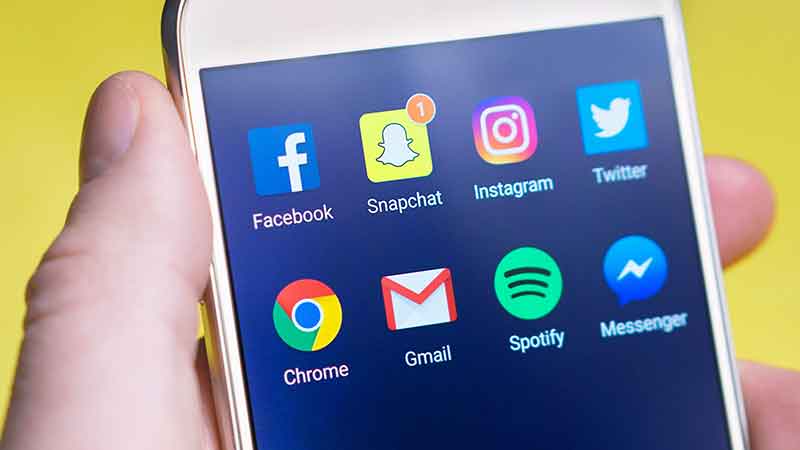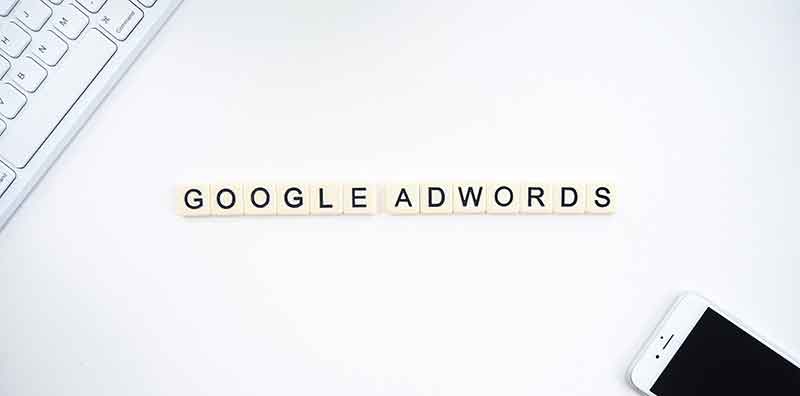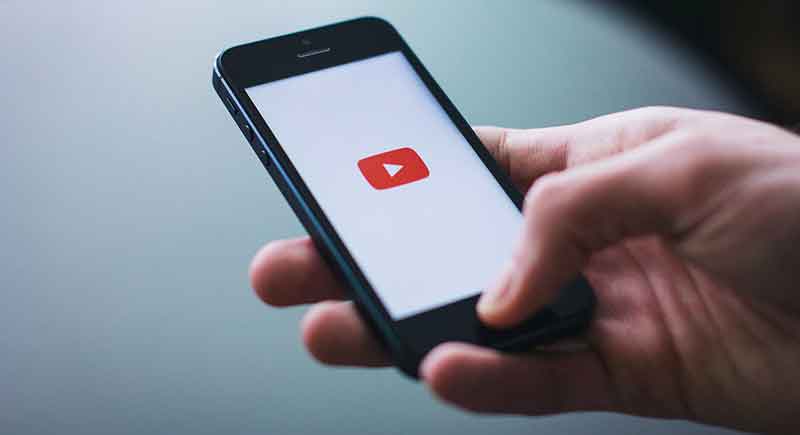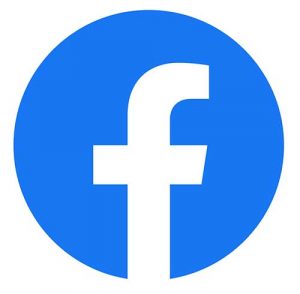The 13 Digital Marketing Types That Help Businesses Grow
Join the 1,000+ brands that trust us for their link building.
Long gone are the days of giant, lifeless billboards and print advertisements. In its place, we see dynamic graphics and interactive advertisements fill every little screen we manage to carry around with us. In today’s digital age, digital marketing reigns supreme.
Depending on who your audience is, what kind of budget constraints you might have, and of course, what products or services you’re offering, there are numerous ways to do this digital marketing thing.
With so many types of digital marketing to possibly invest in, it’s important to understand which is which. We decided to simplify it for you in this comprehensive list of digital marketing types.
What is Digital Marketing?
With screens and devices taking over our daily lives, digital marketing has become necessary for a strong business presence. Customers are not only looking for but are counting on a seamless digital marketing experience to make their consumer-based lives easier.
Digital marketing is any type of marketing strategy available on digital platforms such as the internet. Businesses advocate their services and products across different digital platforms to keep in touch with customers and reel in new ones.
As competitive and overcrowded as some industries may seem today, all it takes is a well-informed, concerted effort to stand out and tap into the boundless sea of consumers online. To catch the attention of these consumers, businesses need to focus on catering to their digital habits.
From pay-per-click advertising to influencer marketing, choosing what kind of digital marketing method depends entirely on your business and its individual marketing needs.
With so many potential customers spending their time online surfing the web for content or actively looking for products, it only makes sense that businesses turn to digital modes of advertising to create and maintain customer relationships.
Digital Marketing Vs. Traditional Marketing

Compared to traditional marketing strategies like print, digital marketing is naturally more accessible and far-reaching in terms of customer influence because, well, the internet. It’s a few clicks away and where most of us spend our free time. It’s global, interconnected, and a pervasive part of our everyday lives.
Different forms of digital marketing give the opportunity for unhindered contact with active consumers in a way that traditional modes of advertising never could.
Not only do demographic analyses allow us to understand consumer habits better, but they also help digital marketers predict and adjust targeted content according to the location and preferences of current and potential customers.
Digital analytical tools can also keep track of growth and returns in a much faster and more accurate way than traditional models of marketing in print. Live consumer feedback, as well as data on returns, allow companies to figure out exactly what works and doesn’t.
Before, advertising was essentially a guessing game. You would put up billboards just hoping that enough interested people would see them and respond. With digital marketing, all the variables – the who, what, when, and where – are known and predictable.
At its core, digital marketing provides advertising solutions through its diversified ways of appealing to the numerous assortment of customers out there. It is an incredibly versatile form of advertising products and establishing a durable brand presence that can be tailored to fit any type of business or budget.
1. SEO (Search Engine Optimization)

With SEO, or search engine optimization, businesses try to increase their chances of being seen through search engine results. Regardless of what kind of business you have, SEO work is key to digital marketing.
Through the analysis of keywords and web development, SEO focuses on organically moving your search engine page rankings up. Put simply, it works to optimize content for search results.
On-page SEO involves studying relevant keywords and their search engine rankings to optimize your website for competitive keyword searches. This keeps in check what and how content is put out.
Through on-page SEO, businesses can figure out what customers are looking for and fine-tune content to meet their demands. This in turn adjusts the search engine results and organically promotes the company.
On the other hand, off-page SEO looks at the external parts of your website that affect search results. This usually involves researching and installing the different types of backlinks that your site will need to reach the target audience – AKA link building.
Off-page SEO is as common and crucial to your digital marketing strategy as on-page SEO. A well-polished set of backlinks will help build up a solid base for traffic coming in from outside publishers.
What’s more, search engines like Google often use sophisticated algorithms for their search pages. In this case, technical SEO hones in on the types of web systems your business runs to increase the chances of passing such technical points of ranking.
Unlike the other types of SEO that focus on the tangible details of e digital marketing, technical SEO looks at the technical aspects of site management, which usually means back-end web development.
Pros:
Free organic traffic generation into the future after your site is ranked
Increase brand awareness
Traffic from SEO is consistent
SEO opens up your business to a massive online audience
Excellent ROI (Return on Investment)
Cons:
An on-going strategy that requires sustained efforts in some cases
Not a quick fix
2. SEM (Search Engine Marketing)

Search engine marketing, or SEM for short, is a blanket term for the different types of digital marketing that aim to put your site at the top of search results on search engines.
By analyzing and manipulating keywords that will bring traffic in, SEM utilizes both paid and unpaid strategies to boost search visibility. This can include different types of digital marketing like search engine optimization and pay-per-click ads, often used in conjunction with one another.
Essentially, search engine marketing maximizes search visibility for businesses because it is an extensive form of coordinating different types of digital marketing for search engine authority.
Since most people only click on the first few links that come up in their Google searches, SEM is vital for effective digital marketing.
Pros:
Lots of different ways to grow search visibility
Reach your clients immediately
Target the right audience according to SEO research
Combination of efforts maximize results
Cons:
Takes time and money to pinpoint keywords, adjust backlinks, etc
You have to be wary of changing search algorithms
3. SMM (Social Media Marketing)

Social media marketing consists of all the types of digital marketing that take advantage of social media for publicity. Social media is an ideal arena for public exposure and customer interaction.
Social media is a revolutionary way to understand customer perspectives and market trends. By studying popular trends and viral products, companies can gauge better ways to attract customers.
Small businesses are especially great candidates because SEM can be self-generated content that is a budget-friendly way to receive feedback and research market information.
SEM is also helpful in boosting search engine results, as higher interaction rates online can translate into higher rankings. Online buzz definitely increases visibility, which promotes sales.
Social media marketing is also a great way to change and adjust a company’s public perception through measures of rebranding. Establishing a company’s social media brand is essential. Specific stylistic tones set the tone for what kind of online customers your company will attract.
From LinkedIn to Facebook, there are many distinct social media platforms to choose from depending on your target demographic and business type.
Some social media platforms like Instagram have built-in data analytics tools that help companies accurately optimize their digital marketing tactics to engage consumers.
Pros:
Many social media platforms collect data and direct ads based on preferences, appealing to relevant customers
Free and highly affordable for all types of digital marketing teams
Easy way to expand your customer base
Encourages personal connections with followers that may foster a loyal community
Provides a great feedback source for improved customer service, which creates brand trustworthiness
Easy way to keep potential leads and current customers up to date
Cons:
Targeted ads could cost a lot and take a while
4. PPC (Pay-Per-Click)

Similar to paid ad listings in newspapers and magazines, Pay-Per-Click (PPC) is a paid form of search engine advertising that puts your business at the top of search results.
Like its name, PPC only charges for every time your ad is clicked on.
While it is not an organic way to grab search engine recognition, PPC is a powerful short-term digital marketing strategy when done right. This means choosing the right keywords, timing, and duration of PPC campaigns.
With PPC, you only pay for people who are actually interested. Now compared to the amount of money traditional marketing teams generally spend on ads that often just get glossed over, PPC saves a lot of money on paid advertising.
It’s important to note that depending on the keyword being competed for, PPC marketing campaigns can be pretty costly. This is because every search engine has a limited amount of spaces allotted for PPC ads.
Chances are that the more competitive the bidding for a keyword is, the higher the rankings and incoming traffic will be. With that being said, a carefully thought out PPC plan will prove to be a worthy investment.
Pros:
PPC can be a sure-fire way to amp up brand awareness on search engines with immediate results
You only pay for relevant visitors who actually click on your ad
Great for bringing in new customers
Works Immediately
Cons:
Limited number of slots and durations for listings
Possibility of expensive bidding wars for prime ad spots
When you stop paying, you stop getting traffic
5. Content Marketing

Like its namesake, content marketing refers to any text, pictures, or multimedia distribution that presents content. In other words, it involves any type of exposure that focuses on giving information out to its audience in lieu of direct advertising.
While traditional marketing strategies often mean advertisements with snippets of business information here and there to entice possible customers, content marketing pushes all of its information forward.
Quality is more important than quantity here, as users and visitors are usually looking for relevant and informative content. This can be in the form of blog posts, ebooks, whitepapers, and infographics that inform readers in written, spoken, or visual form.
Another important factor in content marketing is consistency. You want to be a reliable source for the targeted audience whose interests your material is catered towards.
And as with any digital marketing strategy on the internet, all content put out should be optimized for search engines so that all your hard work will be seen.
Content marketing can be done across multiple types of digital marketing like SMM and video marketing. It is essentially the online version of flyering, except people actually want to take the flyers and are keen to read more.
At the end of the day, promoting your content equals promoting your business.
Pros:
Allows you to flex your expertise in the field and gain the trust of readers
Lure customers in with content (it’s a win win!)
Loyal consumer base
Cons:
Takes more time and effort
6. Email Marketing

Email marketing is a direct way of informing, updating, or advertising to patrons through emails. It’s a great way to bring in new customers as well as hold onto old ones.
One of the first few types of digital marketing to exist and arguably the most underrated, email marketing does what telemarketing calls originally attempted to do but in a pleasant and approachable, 21st century way.
From discount codes and promotional offers to newsletters and sales updates, automated emails are cost-effective ways to entice and secure clients. There are also creative ways to deliver emails that better engage people.
While some people may choose to opt-out of creating social media accounts, everybody on the internet has an email. Technically, everyone is reachable through email marketing.
Another significant feature of this tried and true way to communicate with people online is that it is immune to web trends. Unlike social media marketing, where users may migrate from one platform to another (remember MySpace?), email will always stick around.
Pros:
Analytic tools available to keep track of what works and doesn’t
An interactive and direct way to maintain relationships with customers
A cost-effective way to boost sales
Immune to trends, consistent source
Automated email makes it easy to send out scheduled emails
Cons:
Emails have to stay interesting enough to stay subscribed
Emails have to be eye-catching enough to be opened
7. Affiliate Marketing

Affiliate marketing provides opportunities for collaboration with other industry experts whose existing following or audience you want to tap into. It’s a great way to build customer relationships with targeted groups of people.
You can imagine affiliate marketing as the human form of backlinks – reputable sources of influencers or experts in your industry who are recommending your product to their audience.
While it is usually important to find someone with a significant enough following to bring in sales, it’s important to see whether their target audience matches yours.
Not only is it a great way to appeal to a target audience and increase quick returns, but affiliate marketing also saves a lot of time and money spent on content creation because it depends on affiliates to do most of the heavy lifting.
Affiliates that push your work to their built-in audiences receive commissions for successful advertising, so you can be sure that they will put in the effort to sell your services.
See: Best Affiliate Programs for some great information on making money selling other businesses’ affiliate offers.
There is a diverse amount of ways an affiliate could advocate for your services – discount codes, positive reviews, blog posts, prize draws, and more. Affiliates use tools to manage their affiliate links, and also use various types of digital marketing methods like SEO, PPC, and email marketing to promote their paid content.
Pros:
A third party in charge of most of the work – you just focus on selling
Already established trust with consumers
Can make recurring income with minimal work
Cons:
Can be costly to pay or sponsor trusted affiliates depending on industry
Affiliate offers may change (ie: Amazon’s rate cuts)
May have to learn other types of digital marketing such as SEO
Can be targeted by attribution fraud like sneaky redirects
8. Influencer Marketing

Another component of social media marketing, influencer marketing utilizes influencers to tap into existing consumer pools that may match your social media marketing goals.
Influencers are popular industry leaders who have mass followings online. They have the authority to influence the purchasing decisions of others based on their online personas.
In essence, businesses pay influencers to be in charge of creating and promoting content that advertises their products or services. It’s like paying the actors in a TV commercial to be in charge of writing, directing, and editing the commercial.
Through well-placed videos, photos, and other posts of influencers positively pushing your product or services, this type of digital marketing leverages the vast popularity and reach of influencers to drive up sales.
Unlike celebrity endorsements, influencer marketing is centered around the influencer’s carefully cultivated brand. This makes it a more collaborative effort that may take longer in creating an authentic approach.
Pros:
Already established audience to appeal to
Possibility of engaging a niche audience
Wide reach with higher chances of viral content
Creates buzz that brings search rankings up
Cons:
Could be costly depending on how big the influencer is
Could take some time to see results
9. Radio Advertising

One of the oldest modes of digital marketing that’s been around, radio advertising is still a powerful source of reach. Thanks to a well-strategized transition into the internet, radio advertising is still alive and well as ever.
With roughly 93% of U.S. adults listening to the radio every week, it is by far the most accessed digital platform out there. Split into either online or offline radio, this mode of digital marketing is best suited for spreading brand awareness.
While offline radio reaches a wide and diversified range of potential leads, online radio is a great way to target ads for specific groups of people based on locations and demographics.
Radio advertising usually rests on the classic marketing characteristics of being entertaining and memorable. Keep in mind that most listeners are going to be doing something else while they listen.
Pros:
Huge reach and presence on a daily basis
Easily accessible
Targeted ads and available analysis of listener trends
Cons:
Has to be creative and entertaining to be memorable
10. TV Advertising

While TV advertising took a slight hit after the internet happened, it remains an influential way to gain clientele. This is because TV advertisements are especially hard to forget and have high levels of impact when done right.
Similar to viral marketing, successful TV commercials are usually highly memorable and entertaining. These commercials usually make it viral and become online assets that garner the same attention and revenue as a viral video ad.
While this offline type of digital marketing may soon become obsolete with the downturn in TV viewers, it may still be very useful in generating brand awareness to audiences.
Especially with modern analytical tools that track demographic habits, TV advertising may be a viable option for your digital marketing needs.
Pros:
Wide reach with high impact
Availability of cross channel marketing ensures your ad is promoted in other digital platforms seen by the viewer
Targeted ads that are location and demographic specific
Cons:
Not cost-effective
Production hassle
11. Viral Marketing

Viral marketing relies on internet shares to reach prospective sales leads. Often used with social media marketing, viral content is a fast and on-trend way to create positive exposure for businesses.
It’s like investing in a giant billboard you know for sure is going to get seen – once content goes viral, an endless cycle of buzz will raise your site up on search results and increase revenue.
It’s the modern version of TV advertising, with successful attempts resulting in an unforgettable brand presence that solidifies relationships with existing customers while reminding interested ones how cool and relatable your business is.
At its heart, viral marketing encourages its consumers to do the work of sharing and spreading content. Through viral promotional content, social platforms can work together to lure clients in and spread brand familiarity.
As viral marketing requires a level of attention and unfettered entertainment value that may be hard for smaller, lesser-known businesses to gather, companies often hire outside help to get the job done.
Pros:
A positive reputation among consumers
Tunny and relatable content makes your brand look relevant and good-natured, establishing more trust
Cheap and fast if done well
Cons:
Hard to achieve
Hired help from influencers or content creators may be expensive
12. Video Marketing

As you’d expect, video marketing utilizes video content to increase consumer engagement.
With more and more people finding videos as the most approachable form of consuming content, it has become one of the main types of digital marketing.
From advertisements to educational videos, videos can be customized to meet specific consumer demands according to each type of business. Likewise, budgets of all kinds can produce quality content.
Easily accessible and controllable, video marketing is a versatile tool for researching customer analytics as well as spreading brand presence. Viral videos also fall under this category of marketing.
Whether it’s on websites or socials, videos can be a powerful form of content marketing that fosters a positive customer experience.
Pros:
A popular mode of consumption for everyone on the internet
A personal and direct way of promoting brand awareness
Fosters customer relationships
Cons:
Could be expensive
Requires lots of hands-on help
13. IMM (Instant Message Marketing)

Last but not least, a powerful up-and-coming digital marketing strategy is IMM, or instant message marketing. Similar to email marketing, IMM focuses on sending direct messages to a target audience through text-based communication.
Although it’s not as prevalent of a marketing strategy as its email counterparts just yet, IMM is definitely a pervasive digital marketing tool that your company will benefit from, especially in terms of relationship building.
Typical applications of instant message marketing are live chatbots that provide customer assistance on sites. Such holistic ways of interacting with clients undoubtedly boost sales and aid customer service.
Especially for business-to-customer operations, IMM provides a great opportunity for streamlined content marketing. Subscription-based text updates provide a consistent line of advertising content.
For business-to-business operations, other, possibly more secure lines of communication exist in forms of encrypted instant messaging.
Whatever type of business that a company falls into, instant messaging is a quick and easy way of staying connected.
Pros:
A consistent line of communication
Provides the opportunity for stronger internal communication within marketing teams
Real-time updates
Secure messaging features possible to impress customers with
Cons:
Possible to be blocked
Not as easy to get contacts as email
Which Type of Digital Marketing is Best?
While some businesses may benefit from the use of all types of digital marketing, others may only need to use some.
Which digital marketing types are best is different for each business as budgets and marketing objectives vary.
With the endless types of digital marketing available at our fingertips, it’s best to go through each option to make sure your marketing efforts are not going to waste. We hope this list will help you discern which mode of digital marketing will suit your business best.
If you have any questions, comments, or other types of digital marketing strategies that you think should be mentioned, leave them below!
Contributing Author: Vanessa Son
 Article by:
Article by:
Chris Tzitzis
Hey I'm Chris, one of the founders here at SirLinksalot. I'm into building internet money machines (affiliate websites) and specialize in building backlinks. Find out more about me and my link building team.
 Questions or Comments?
Questions or Comments?
We are active in our Facebook Group seven days a week and would love to hear from you. Ask us questions, learn from other group members, and share your knowledge.
Related Posts
Ready To Start Building Your Rankings?
Your link building journey to the top of Google starts today!
Apply for Managed Link Building to get a free analysis and game plan, or order backlinks a la carte.
Link building services that work.


